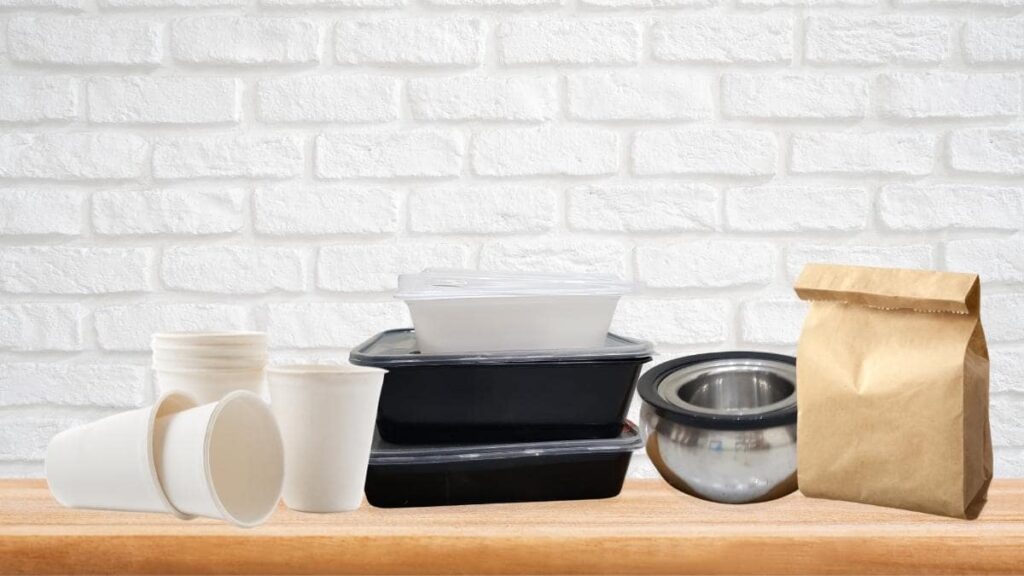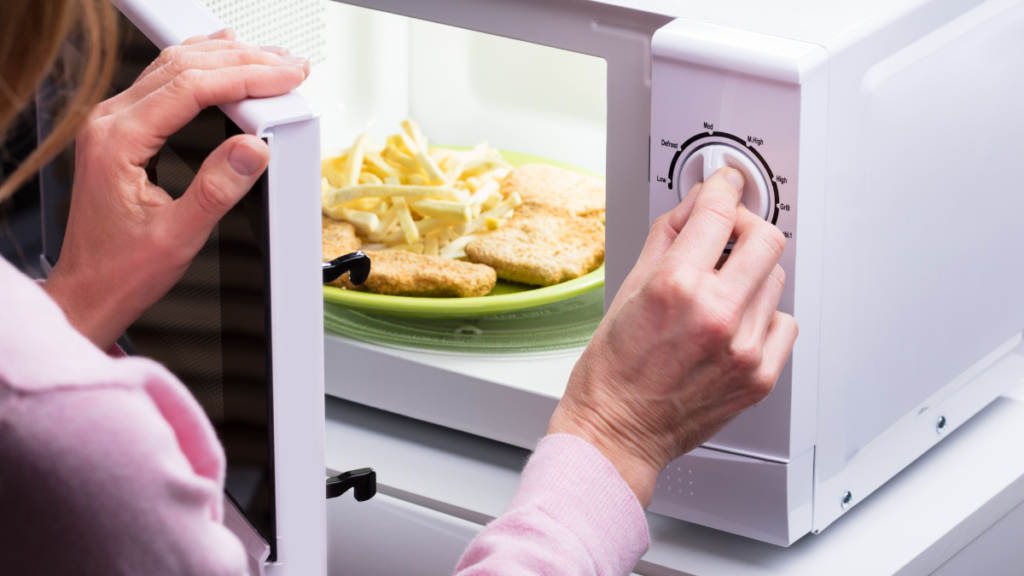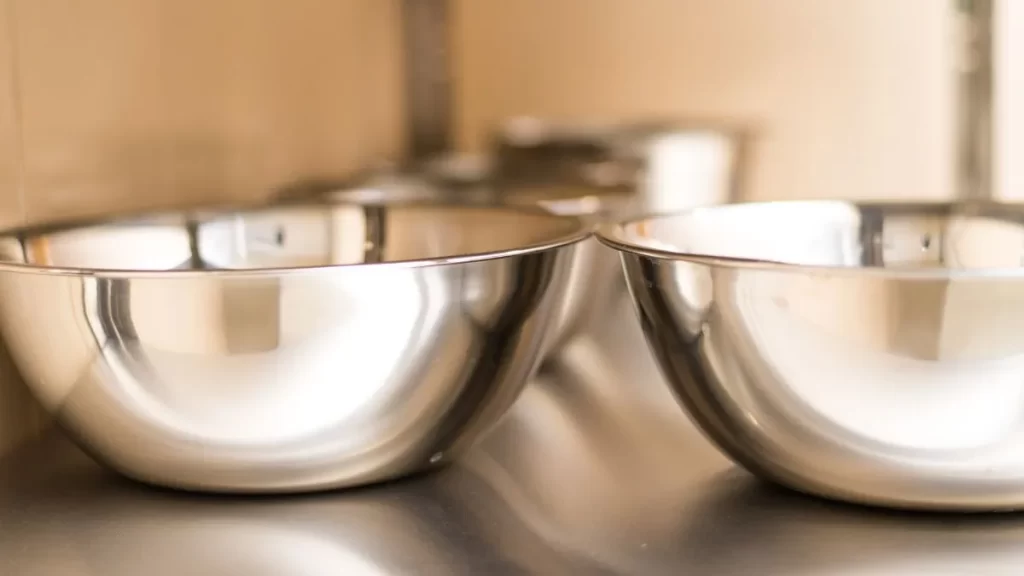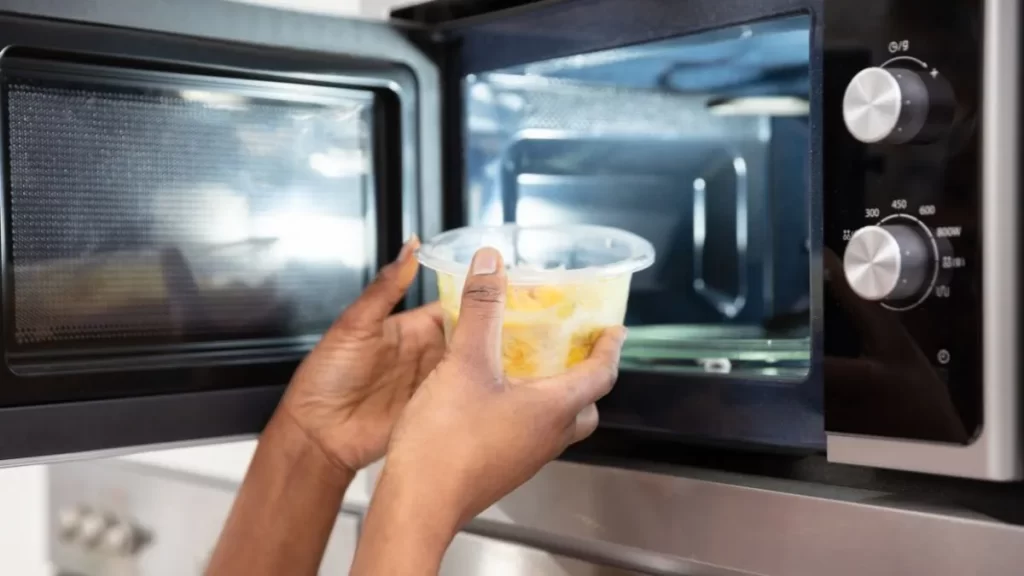Did you know – certain materials that you put in the microwave to heat or reheat your food are not microwave safe.
Microwave cooking is undoubtedly the most convenient cooking mode.
But if you are blindly tossing any container in your microwave, ignoring the instructions in your user manual, you are simply shortening the lifespan of your microwave and not to mention risking a fire hazard.
Cooking in unsafe containers is what leads to a mishap.
We have prepared this savior guide on what not to put in the microwave to reduce the chances of accidents by making you an aware microwave user.
So brush aside all your confusion and scroll down for an enriching read to use a microwave confidently with improved lasting performance.
15 Materials That Are Not Microwave Safe
Disposable Food Containers/Take-out Containers & Boxes
Take-out and disposable food containers are not safe to put inside a microwave because of their cheap construction, prone to melting in extreme heat, and a potent chance of food toxicity.


Take-out boxes are made of inferior plastic, best for one-time use to pack and carry food home, and must be disposed of once you take the food out in a microwavable container for reheating.
So the best way to reheat ordered or parceled food is to transfer it to a microwave-safe container every time than microwaving it in a take-out container.
Stainless Steel Containers
Putting stainless steel in the microwave can risk appliance performance and longevity.


Any metallic container is strictly restricted in a microwave oven to ensure your and your loved one’s safety.
This is because metal containers like stainless steel bowls, plates, mugs, or bottles reflect the microwaves on the cavity walls, causing sparks and may burn out the magnetron.
When you microwave food or drink in stainless steel containers, the microwaves fail to pass through metal and do not get absorbed by the food or liquid.
Styrofoam Containers
Styrofoam take-out containers are great insulators in keeping food warm but should better be avoided in a microwave.


Styrofoam is a type of expanded polystyrene banned in some countries as they are not eco-friendly and certainly not a microwave-safe material.
However, Styrofoam take-out containers are still abundantly used in many countries.
Like most users, you might also be transferring the entire package to instantly reheat in a microwave, only to harm your health.
Styrofoam, also called polystyrene foam, contains a compound called styrene that gets activated when heated and leaches into the food, making it carcinogenic.
So it’s best to avoid putting styrofoam containers in a microwave oven.
Any Type of Paper Bags
Though you can use paper plates and cups made of plain white paper to reheat food in a microwave, make sure it’s microwave safe.
Using thin paper bags or printed take-out paper bags with or without the chemical or plastic coating will catch fire and should be avoided.
Some paper bags with metallic paint might be combustible to spark a fire hazard and damage your kitchen appliance.
So it best is to avoid any non-microwaveable paper containers to reheat your food as they are highly combustible and may lead to a mishap out of your sheer ignorance.
Plastic Bags & Plastic Storage Containers
Do you often toss plastic wrapped or packaged food in the microwave?
Plastic tops the chart being highly flammable and toxic among the list of unsafe materials and should be avoided in a microwave.
Even if your plastic containers are labeled as ‘microwave-safe’ avoid heating or reheating food and never use plastic containers for prolonged microwave cooking, even if such containers are made to withstand high melting points.
If you want to use containers for daily microwaving, buy ceramic or glass utensils that are high-quality and microwave-friendly for uncontaminated cooking rather than spending money on plastic bowls, plates, and lunch boxes.
Also, strictly abstain from microwaving cheap plastic take-out and storage containers to avoid fire and health hazards.
If you want to know more, check out our detailed article Can You Use Plastic Container In Microwave.
Aluminum Foil
Are you hesitating to microwave food wrapped in aluminum foil?
Your doubt is real as aluminum foil is a thin metal sheet that reacts the same way as other metals when put in a microwave.
If your food or container top is covered entirely by the aluminum foil, your food will not heat because the microwaves will bounce from the metal surface and may damage your oven.
You can, however, cover your food partially with a fresh, smooth aluminum foil to cook or reheat the food.
Ensure that the aluminum foil does not touch the oven’s walls and that there are no pointy edges in the foil, as it would cause spark or fire.
Also, do not put used aluminum foil in the microwave, and do not use aluminum foil if your microwave’s interior is metal.
Unplug immediately if you notice sparks if you have accidentally put aluminum foil in the microwave.
Cookware Or Ceramic Cookware With Metal Decorations
Though it is safe to use microwavable cookware like ceramic containers, avoid the ones with aesthetically appealing metallic paint or decoration.
Microwave-safe glass or ceramic dishware with metallic paint, metal handles, or any kind of metallic embellishment or bases must be discarded for microwave cooking.
As we have mentioned a couple of times in this article, metallic paint or anything metal will reflect the microwaves and can cause arcing (sparks), fire, or may damage your microwave.
So check your ceramic cookwares carefully for any metallic design (even the elegant gold, silver, or platinum) before putting it into your microwave as a caution and avoid metal in every way.
Yogurt, Jam & Butter Containers
Yogurt, jam, and butter containers are made of inferior plastic with zero tolerance to higher temperatures.
So drop the idea of heating or reheating food in these fragile containers, which will not only melt in extreme temperatures but also intoxicate your food by leaching chemicals.
These recyclable containers are not at all microwavable and are not meant for heating food.
So yes, these are also not microwave-safe containers.
Clothes or Any Kind Of Fabric
Many people use microwave ovens as a drier, and some even toss fabric to disinfect them, which still have no scientific clue.
If you have seen something like this and are thinking of tossing your kitchen towels or clothes in the microwave to dry them quickly, drop the idea because your clothes or any kind of fabric is not microwave-safe.
It takes 5 seconds for the microwave to heat up as soon as you hit the start button.
Microwaves emitted by the magnetron will quickly heat the water molecules present in the fabric and catch fire.
So don’t try to experiment with your microwave just because you want your clothes to dry fast.
Silverwares
Silverware is not microwave compatible as even a general microwave-safe container with silver or gold trim will lead to spark, also known as arcing.
If you notice any arcing inside the microwave during cooking, immediately switch off the kitchen appliance.
Metallic dishware and even some vegetables and food with high mineral content or additives can also cause arcing, which will surely damage the microwave because of your prolonged ignorance.
So please have a glance at your container before placing it inside your microwave.
If you have mistakenly put a silver spoon before microwaving, remove it immediately to avoid any fire hazard.
Wooden Containers
Though wooden dishware is gaining huge popularity, being non-toxic and aesthetically appealing, unfortunately, not safe for microwave use.
Why? Because a microwave heats faster and starts charging up the water molecules of the food and the container made of wood.
So when you microwave in wooden dishware, the heat starts absorbing all the moisture in the container, drying and cracking it up inside the microwave.
The wooden container can also burst and catch fire, damaging your microwave if you do not unplug the appliance in time.
Anything made of wood is not microwavable, except for wooden spoons but without any metal design or handle, which you can use for quick heating or reheating purposes.
Metal Twist Tie Wires
Any metallic object is strictly prohibited in the microwave, even if it’s the humble-looking metal twist tie.


Cautiously check for any metal twist tie before tossing a frozen meat pack to thaw, as your silly ignorance can lead to arcing inside the microwave.
Metal twist tie wire reacts with the heatwave same as the solid metal bowl and metal rim on china dishware by reflecting the waves to the cavity walls causing sparks or arcing.
So check properly for any metal twist tie before thawing any frozen packaged food in a microwave oven to protect your dependable kitchen gear.
Melamine Plates
Though melamine is heat and fire-resistant, it isn’t microwave-safe.


Melamine plates or bowls are made of a kind of plastic resin, making them lightweight and durable for daily use but using them to microwave food is not advisable.
Despite its advantages, melamine plates are best to be avoided for microwave cooking, as the excess temperature will dry the plate, develop cracks or even explode the container.
You can, however, use a microwave-safe container to heat or cook food and serve on melamine plates.
Pizza Cardboard Boxes
Although it seems convenient to toss the pizza box in a microwave oven to quickly heat all pizza slices in one go, it’s best to avoid it.
You would not want your pizza to smell like cardboard or want it to get contaminated with chemicals by heating the whole box in a microwave oven.
According to an article published in Wired, pizza boxes are made of corrugated cardboard, which means the cardboard layers are glued together to make the boxes thicker and more durable to withstand the heat and moisture that your hot pizza releases.
So it’s best to transfer the pizza slices to a microwave-safe ceramic plate and remove the plastic pins that hold the pizza slices together before putting the pieces in the microwave.
Ziplock Bags
You might have seen many using ziplock bags in a microwave, but we suggest not to use one unless specifically mentioned by the brand as microwave-compatible.
Ziplock bags are made of polyethylene plastic that starts melting when submerged in boiling water(100 degrees Celcius). These bags are suitable only for heating and reheating but never for cooking or steaming food.
Steam can cause more intense burns than boiling water, causing the bag to melt inside the cavity and catch fire.
So, before using ziplock bags in a microwave, read the company instructions carefully to stay on the safe side and avoid accidents.
Final Thoughts
If you are new to microwave cooking or have already experienced disasters due to a lack of awareness about which container is safe for microwave cooking, we hope reading this has been of great help.
Microwaving is undoubtedly the most convenient and safest cooking mode only if you know which containers are microwave-safe.
Due to lack of knowledge, many microwave mishaps are reported yearly, and that’s why some people hesitate to use a microwave.
We hope our guide on the safest microwavable containers helped you evolve as a confident cook.
Read Next
Best Convection Microwave Oven In India







